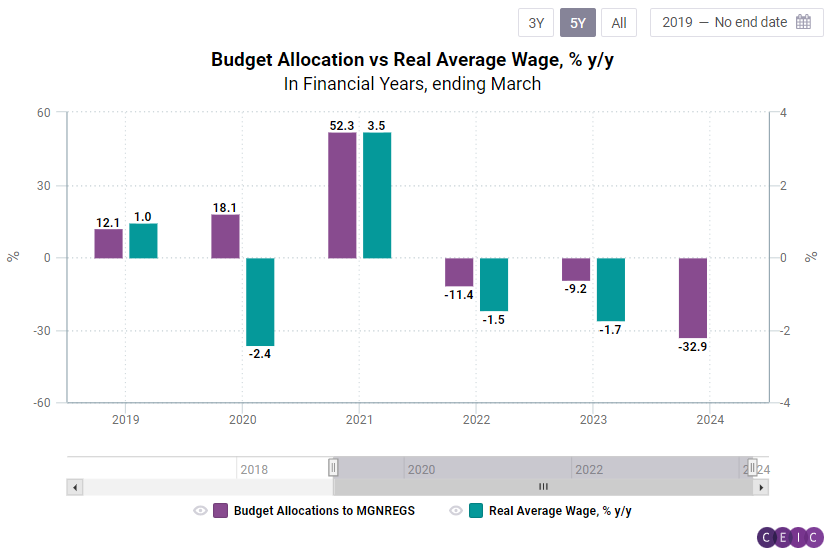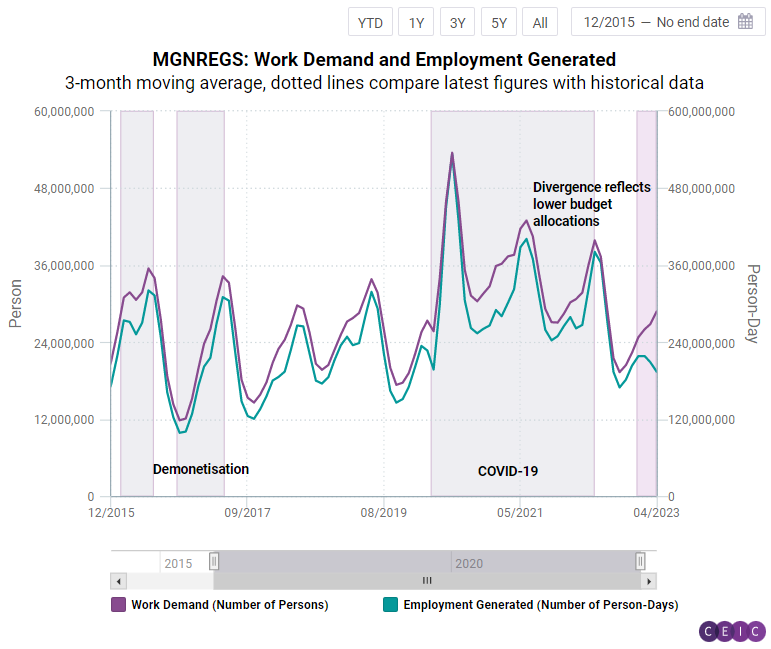
India is making progress towards the much-needed formalisation of its extensive labor market, as evidenced by data from the Mahatma Gandhi National Rural Employment Guarantee Scheme (MGNREGS), available within CEIC. This popular social security program guarantees 100 days of unskilled manual work or equivalent pay to eligible rural households and played a crucial role in supporting vulnerable groups during the COVID-19 outbreak.

Both work demand and employment generated under MGNREGS have generally decreased since June 2022, although they have yet to reach pre-pandemic levels in absolute terms. Work demand has been experiencing annual declines since June 2021, with a 9.3% year-on-year drop in April 2023. On the other hand, generated employment in the same month experienced a more significant decline of 27.3% year-on-year. Additionally, while the average national MGNREGS wage has steadily increased, the real growth (adjusted for inflation) has significantly dropped since November 2021, with the average yearly wage declining by 1.5% year-on-year in FY2022 and 1.8% year-on-year in FY2023.

The current moderation in work demand reaffirms that as the pandemic recedes, a significant portion of the rural population is returning to cities for work. This change can also be attributed to the government and private enterprises implementing greater skilling programs, which drive the formalisation of India's job market. Informal jobs currently account for almost 80% of India's total workforce, and increased formalisation would greatly contribute to improving the understanding of the economy through reliable macroeconomic data. India is notorious for its lack of comprehensive labour market figures.

The government is also allocating fewer resources to MGNREGS, which not only reflects the temporary nature of the scheme but also potentially incentivizes job seekers to pursue more formal employment where remuneration is generally higher compared to the informal sector. For FY2023, total allocations were reduced by 9.2% year-on-year, and for FY2024, allocations are expected to drop by 32.9% year-on-year. The lower allocation is likely to result in a greater disparity between job demand and employment generated, further shifting some of the demand towards formal employment. This divergence has already been visible and pronounced since the beginning of 2023.
The CEIC Global Database provides access to a vast database where users can gain insight into the ever-changing dynamics of world economies.
.png?width=160&name=ceic-logo-Vector%20logo%20no%20tagline%20(002).png)
